HP Reverb G2 in review: VR glasses on - reality on?
Find out in our review of the HP Reverb G2:
- How well HP's VR glasses can be set up
- Whether the high pixel density of the lenses brings full realism
- Whether the flight in the Microsoft Flight Simulator feels like the real thing
My FS2020 setup - only one thing is missing
First of all: I like the Microsoft Flight Simulator 2020. There is a yoke at the desk, the thrust controller next to it and the pedals for the rudder at the bottom. You can do it - but you don't have to. But if you do, flying becomes even more realistic. But not completely. Anyone who has ever sat in a Cessna 172 (at least there are probably more of them than those who fly a real A380) knows that "taking a quick look around to see what's happening on the left and right" is a not inconsiderable part of flying.
I started my first flight attempt in FS2020 VR mode with a VR headset, which otherwise actually works as standalone goggles, but can be connected to the PC with an appropriate cable. The result, to make it short: Exciting! Exciting because there is already a decent boost of reality, but the resolution is so low that you can neither really read the analog instruments nor a digital digit in the cockpit of the bird. It's enough for pure line-of-sight flying, but you shouldn't spend a second wondering what course or speed you're really flying
Image gallery
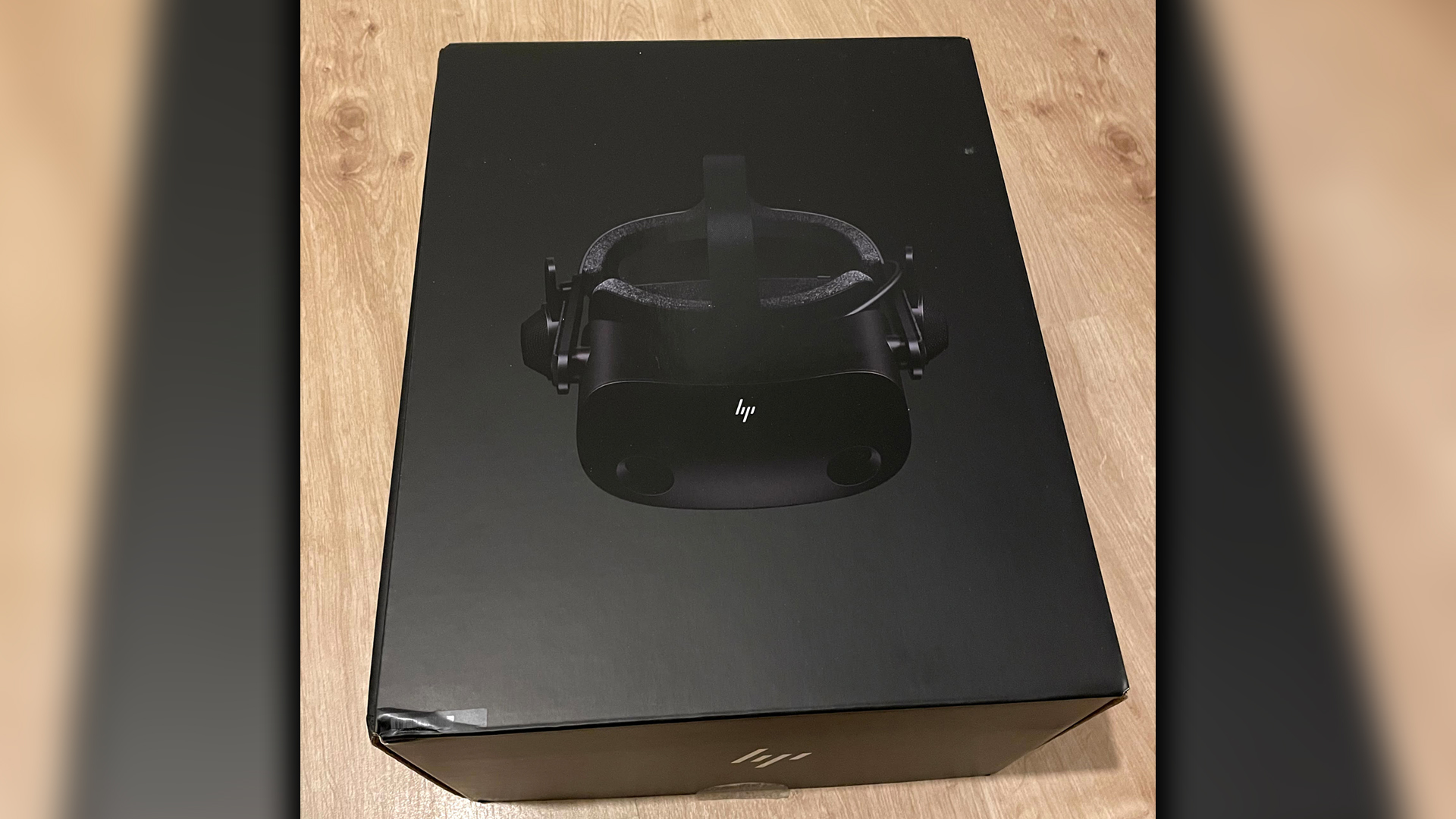
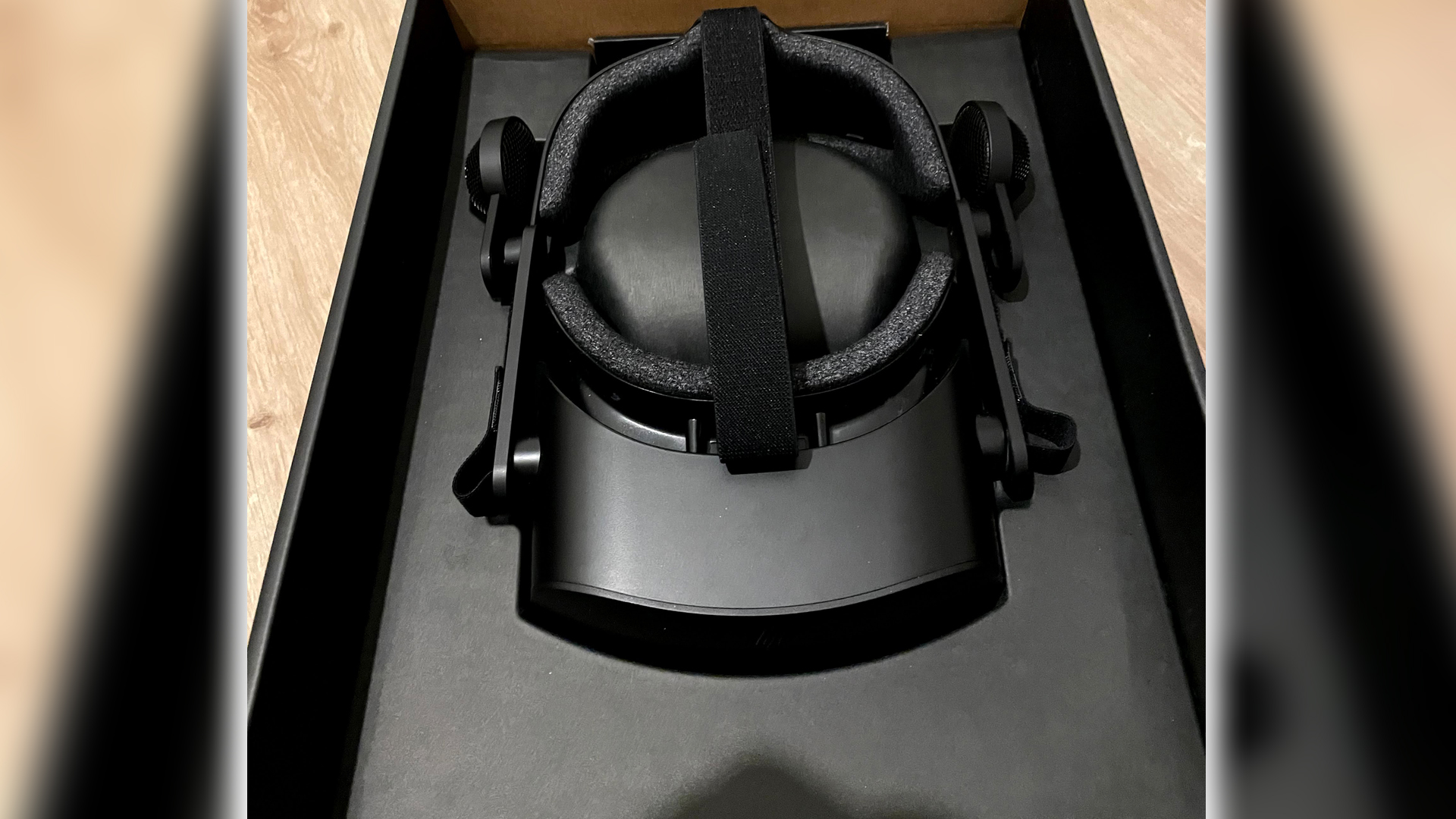
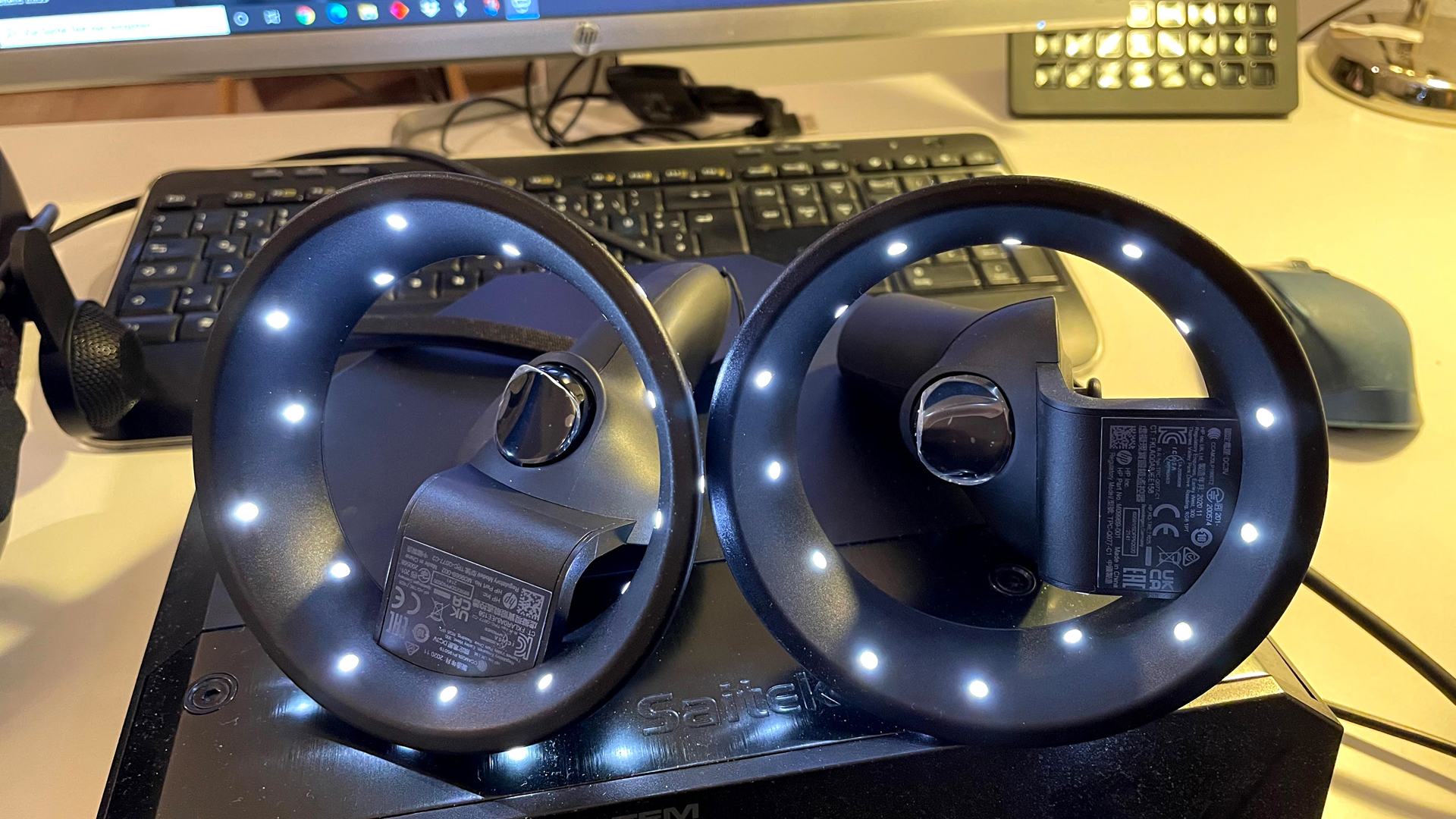
The HP Reverb G2 in test flight
So something else has to be found. In my case, the HP Reverb G2 test goggles - because they're supposed to be especially sharp. From a purely technical point of view, the 2160 × 2160 pixel resolution per eye is really impressive. But first things first
We unpacked the test model and put it on for the first time. Firstimpression: It doesn't pinch. At least not with the pear shape of my skull. Now you can say: "Lucky thanks to the right DNA". Or simply: "HP, well done!" I can only judge for myself: The glasses fit damn well, feel very light even with cable and make really dark. Especially my VR problem area under the nose is completely light-proofed by the HP.
Moving on to the controllers. They feel a bit big to me, but I quickly got used to them. They also glow nicely. Actually, it's a shame that you can't see that when you're in VR ..
Time to hook up the system. Works as easy as pie. One plug into the goggles, the other two to the PC and the system was ready. You may still have to pair the controllers. But since I had a test system, my pre-tester already took care of that. Thanks at this point!
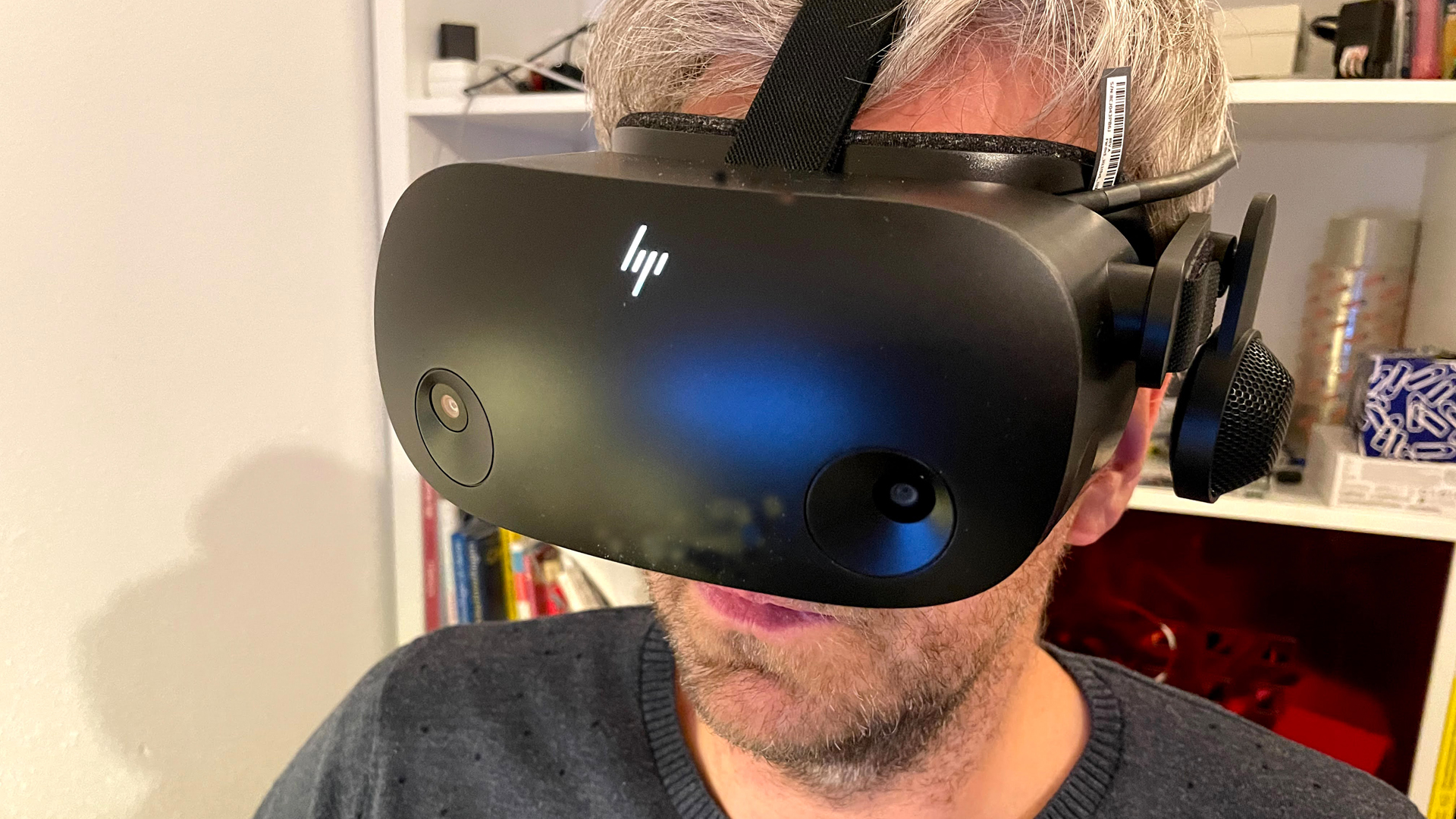
First impression: Super!
So I put on the glasses and entered the world of Windows Mixed Reality VR. First impression: Not only does it look great, but it also sounds great. Something that is often underestimated, because the spatial sound makes the music in VR. The HP Reverb G2 benefits from the fact that the two integrated speakers of the glasses support spatial audio. I do not know if it is enough for VR rock concerts, but it is more than enough for a dignified acoustic excursion into VR
And the listening experience is as lag-free as the entire VR system. Nothing is worse than VR goggles with inside-out tracking that follow head movement as ponderously as a jumbo that has just decided to fly a right turn. I have to say: in the everyday VR mode I was in, there was no jerking, twitching, waiting, or smearing at all. Head turned, image co-rotated, head shaken, image co-rotated, headbanging tried - found that the glasses fit well, but you shouldn't overdo it.
Interim conclusion: In the Windows Mixed Reality environment, the HP Reverb G2 does a great job. The resolution is impressive, the sound fits, the controllers work precisely, and the tracking sticks to the head movements.
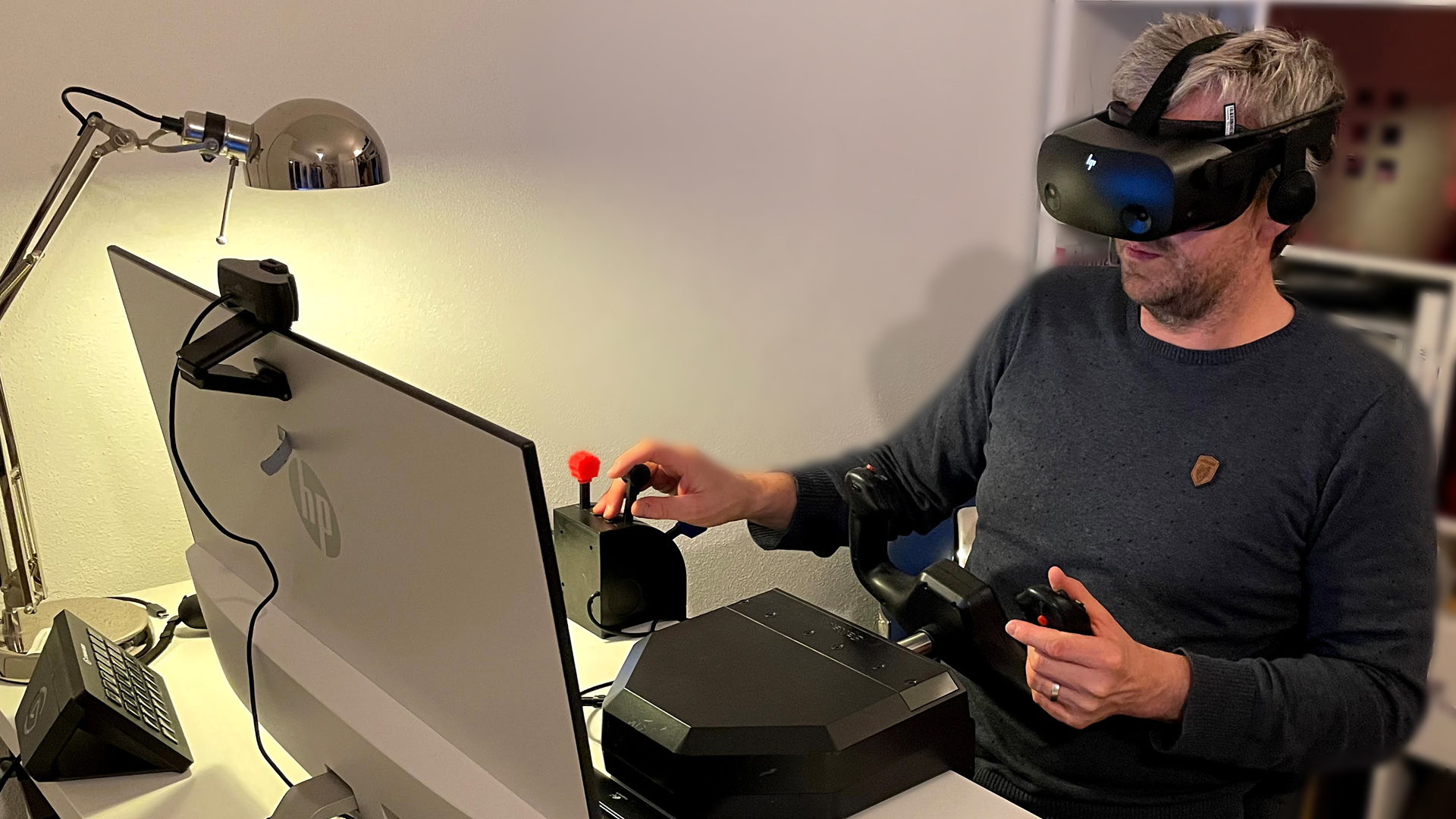
We take off
Takeoff preparations complete - time to launch Flight Simulator 2020. I set up the Cessna 172 with the Garmin 1000 cockpit and Augsburg Airport on the screen in normal mode, set the time to early morning and the weather to beautiful. Then runway 25 is selected and I'm standing at the holding point waiting.
It can start: Glasses on - and glasses off ... Without starting the VR mode, it's no fun. You see enough black in real life, so you don't have to do that here, too
So I first switch to VR mode with CTRL TAB. I don't know if this is the most elegant way, but it works for me. But now: Glasses on!
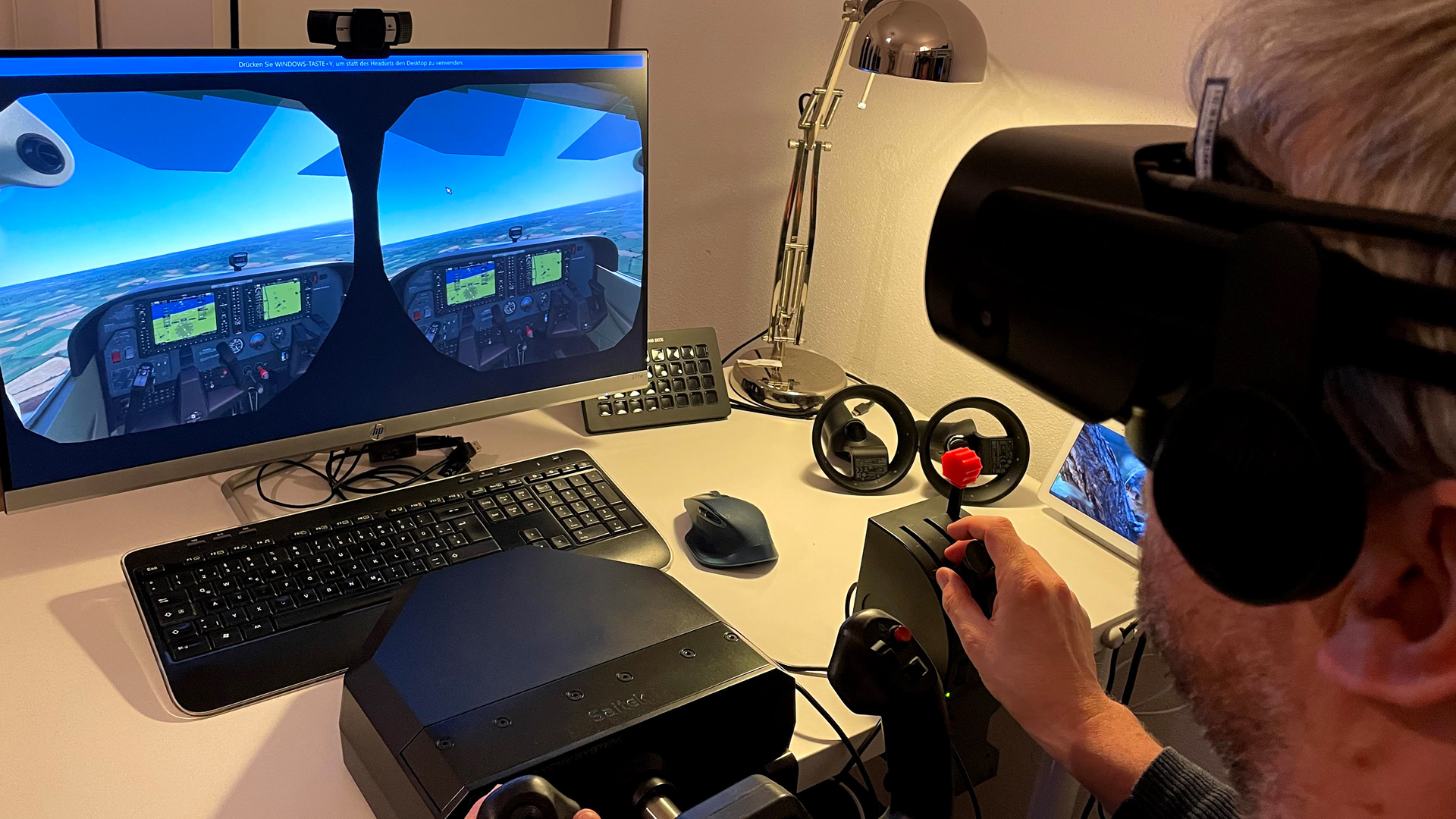
WOW
Seriously, folks - that's impressive what you get to see. While as a 2D flyer in front of the monitor (no matter how many inches) you have no idea how 1.95 meters of body size feels in a mouse cockpit of the Cessna 172 (it's damn tight), the 3D view through the HP Reverb G2 makes you realize that extremely close to reality. I feel as if I'm really sitting in a C172, even the view over the engine hood almost looks like the real thing.
What's more, I can see on the Garmin that the machine is precisely aligned at 250 degrees. Even the engine speed on the right display can still be read. Respect. The resolution simply "pays off".
The point alone flashed me, being able to duck slightly to look for the flaps on the right and left to see if they are retracted. Everything moves exactly the way you move yourself. The only question now is: Where is my damn yoke and where is the thrust control?! Sure, these controls are fixed to the desk and are of course not synchronized in the picture - how could they be.
For bystanders, it would certainly look more than strange if a guy with VR glasses on his head groped around trying to find the yoke and thrust control - but that's just part of the business.
Anyway: Goggles on the nose, left hand on the yoke, right hand on the thrust controller, motor up, brakes out and the car moves. And indeed: thanks to the resolution, you can see the speed and at 55 knots it's off into the air.
Bloody hell. It almost feels like the real thing. The fact that it doesn't seem quite real is simply because I'm still sitting on my butt on the desk chair - but that's also the only thing that doesn't remind you of real flying.
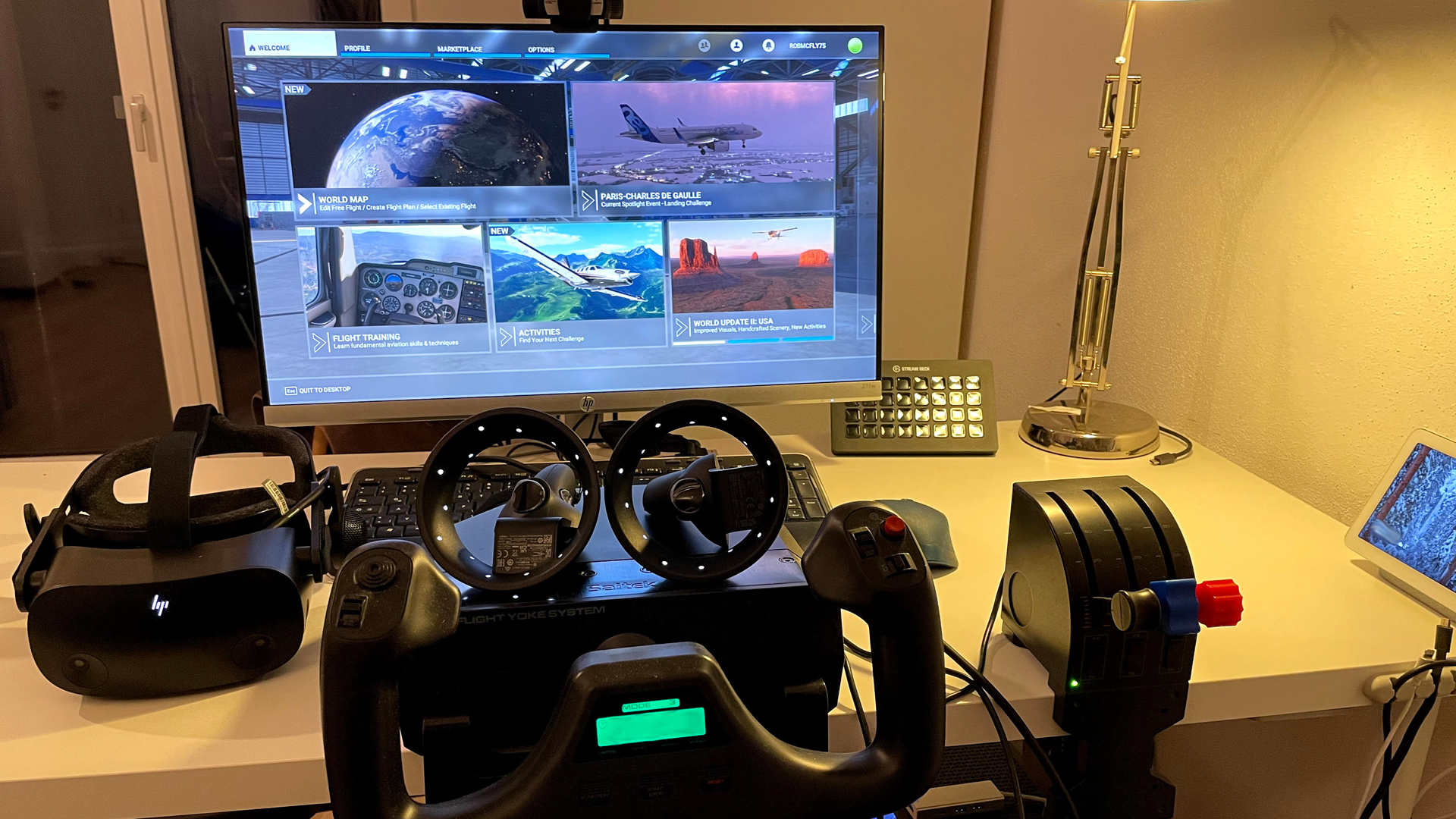
An almost perfect flight training
So I turn to the right - into the runway. And here again: The view to the right in the direction of the airport seems as real as if you were actually looking out of the window ... Every movement of the head is smoothly reproduced, contours and instruments are sharply displayed, and you have a clear view of what you need. A real experience.
Same for the landing: flaps out, speed down, runway in view and you float in like it looks in the real world. To be honest: an almost perfect flight training
To cut a long story short after all that writing: The HP Reverb G2 does its job. The resolution is killer, the weight is impressively light, and the goggles fit - at least on my noggin - really well. The FOV (Field of View) was perfect for my needs, and the sweet spot was just right for me
The only criticism is that the glasses seal almost too well for me. I was really warm underneath after 30 minutes. But that's probably part of it
In any case, I'm having a lot of fun with the VR flying team - and it feels pretty damn real with it
With this in mind:Cleared for takeoff - I'm going for another spin!
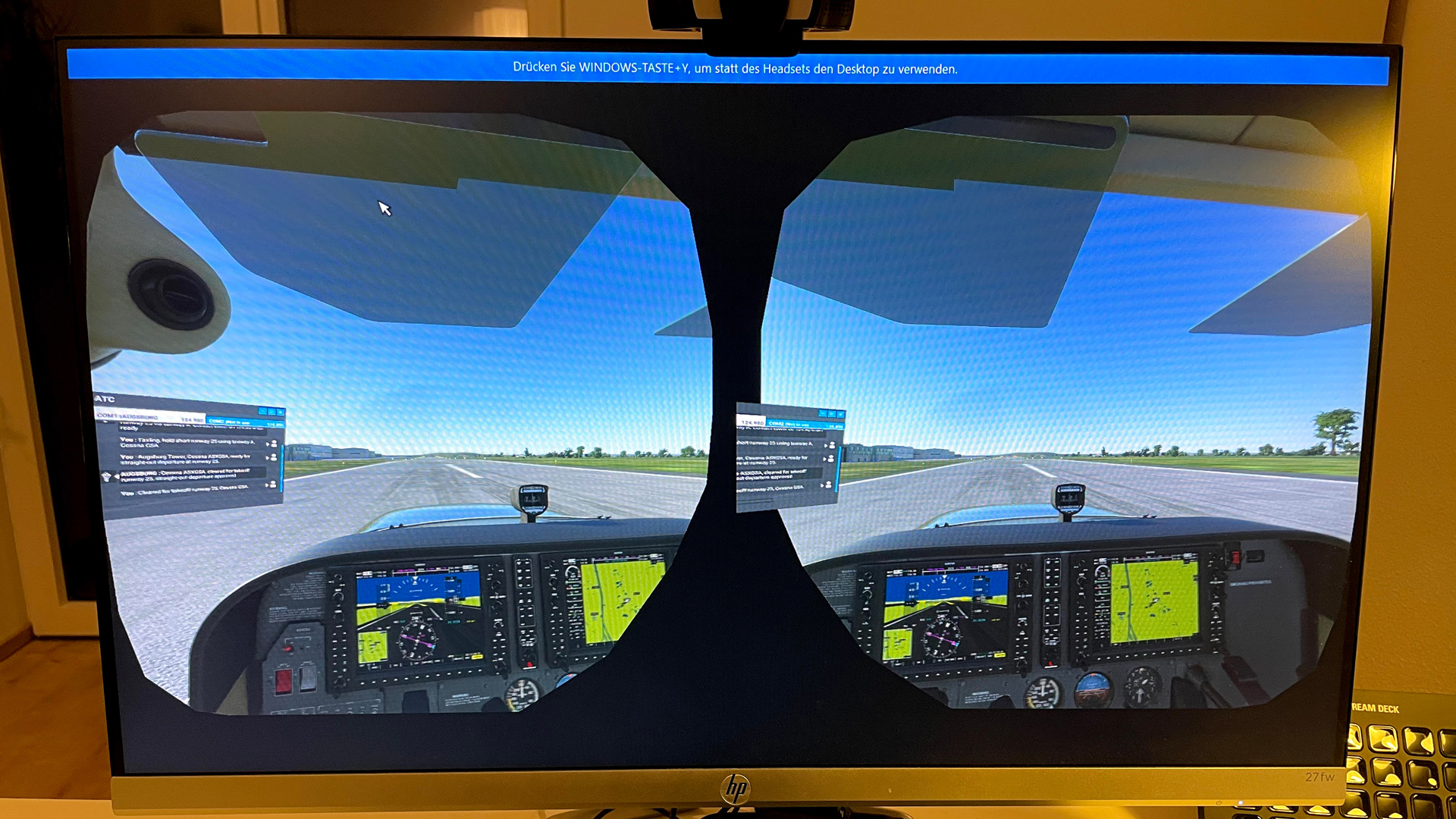
More about Microsoft Flight Simulator 2020 & VR:
- Microsoft Flight Simulator 2020 Mods: The 14 Best Mods
- Microsoft Flight Simulator: The best tips and tricks
- GTA 5: Mod puts Grand Theft Auto 5 into VR
Visit us on Facebook and Instagram to discuss your favorite games.
